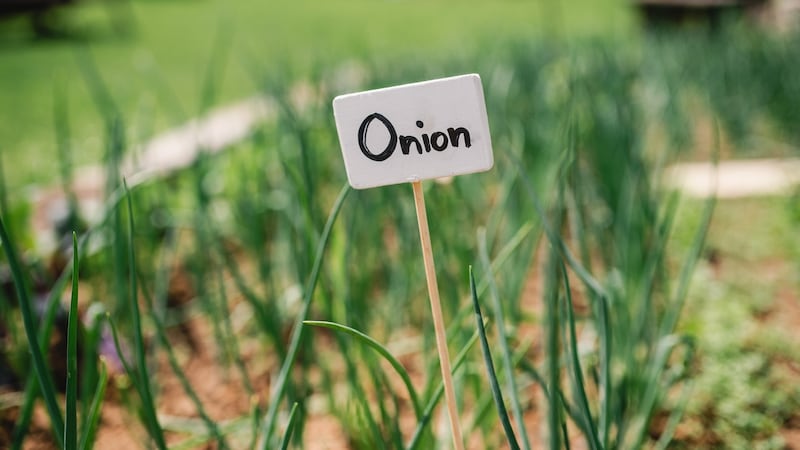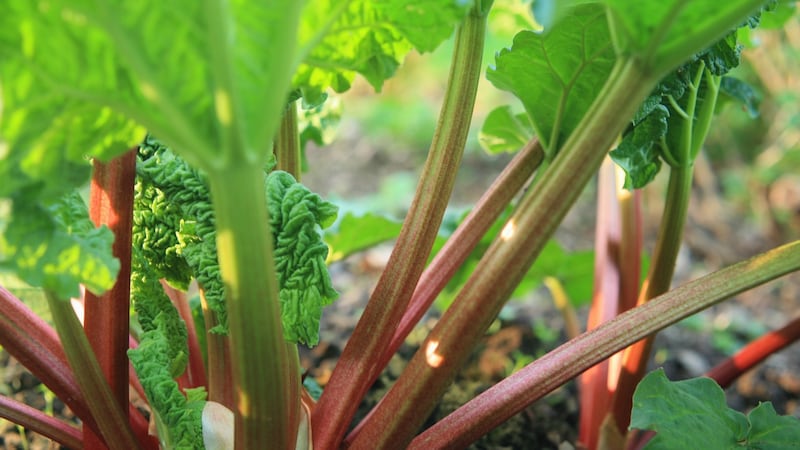I harvested the garden’s maincrop potatoes last week. Five long, leafy rows of Carolus, a new, high-yielding, flavoursome, blight-resistant variety planted smack-bang in the middle of lockdown and which I dug up on a golden, cobwebbed September morning, gently rooting around in the dew-soaked autumn soil for each plump tuber. Stored in a cool, dry, frost-free shed, they’ll be savoured throughout the coming winter months.
As for the raised beds they grew in, a lifetime’s gardening has taught me that nature detests a vacuum. What’s presently a tidy expanse of clean, bare ground will soon be colonised by weeds and start losing soil fertility unless I quickly intervene.
One option – an increasingly popular one among the country’s growing tribe of kitchen gardeners – is to fill that freshly vacated growing space with an overwintering crop of garlic, which does brilliantly from a late September-October planting. Just one plump bulb can give 10 or more individual fleshy cloves, which should be gently planted in the soil (pointy tip up and ideally to two or three times their depth) and then left to root and slowly swell. Planted at an optimal spacing of 10cm-20cm between each clove and with 30cm between rows, they will gradually grow into fat, fragrant bulbs ripe for harvesting next summer.
But first a quick word of caution: resist the temptation to use supermarket-bought garlic bulbs for planting, as these can potentially introduce nasty plant diseases and aren't necessarily varieties best suited to growing in an Irish garden. Instead source good-quality seed garlic – its proper horticultural term – from your local garden centre or from a reputable online supplier such as quickcrop.ie. mrmiddleton.com, fruithillfarm.com and westcorkgarlic.com. Recommended varieties suitable for autumn-planting include Red Duke, Lautrec Rose, Lautrec Wight, Vallelado, Chesnok Red, Germidour, Arno, Marco, Thermidrome , Messidor, Morado, Solent Wight and Christo.
Hardy onions
Another way to make good use of any recently emptied vegetable beds at this time of year is to plant overwintering onions. Like garlic, these are members of the allium family and so can be kept within the same crop rotation. They also enjoy the same kinds of growing conditions, requiring a weed-free, fertile, free-draining and not recently manured soil in a sunny, open spot, enriched with some well-rotted garden compost, a generous sprinkle of wood ash and a few handfuls of pelleted organic fertiliser added a week or so before planting. Suitable varieties of onions for autumn-planting include the ultra-hardy Radar and Troy.

Broad beans are yet another winter-hardy crop that enjoy the same conditions and can be direct-sown outdoors from now until early November. Varieties suitable for autumn sowing include the ultra-hardy Aquadulce Claudia and Super Aquadulce. There’s also time (if you’re quick about it) to sow winter-hardy salads such as rocket, rocket wasabi, mustard mizuna, mustard, claytonia, corn salad and tatsoi.
As temperatures fall over the coming months, these leafy crops will greatly benefit from being covered with a cloche or a layer or two of garden fleece to protect them and boost growth levels. Seed of all of the above is available from good Irish garden centres and online suppliers such as greenvegetableseeds.com, quickcrop.ie, irishseedsavers.ie, theorganiccentre.ie and brownenvelopeseeds.com. Good garden centres will also have trays of winter-hardy varieties of lettuce, kale and spring cabbage in stock that are suitable for transplanting out into the garden at this time of year.
October is also the perfect time to plant rhubarb, one of the longest-lived and most reliably productive perennial plants in any kitchen garden. Just make sure to give it a rich, well-drained but moisture-retentive soil in a sunny, weed-free spot away from the shade and root systems of established trees or shrubs. Recommended varieties include Hawke’s Champagne, Timperley Early and the autumn-cropping Livingstone.

Cut flowers
Food crops aside, why not use some of that freshly freed-up growing space as a temporary cut-flower patch? Tulips are the perfect candidate: productive, easy to grow, hugely decorative and available in a wide range of colours. Suitable varieties include any of the longer-stemmed, late-spring-flowering kinds including the extravagantly beautiful late-double and parrot-types beloved of florists such as ‘Copper Image’, ‘Mount Tacoma’ and ‘Amazing Parrot’.
For the widest choice, buy the bulbs now, but hold off planting them until late October/November to avoid the risk of disease. Their fleshy leaves won’t emerge above the ground until next spring, so to protect the bare soil over winter, overplant the bulbs with wallflowers (these also make excellent and deeply scented cut-flowers), which are available to buy as young plants from good Irish garden centres at this time of year. Both can then be lifted in late spring after flowering to make room for next summer’s crops. Just bear in mind the fact that wallflowers are members of the cabbage family (Brassicaceae) when it comes to planning crop rotations.
Many kitchen gardeners also like to sow green manures in early autumn as a nature-friendly way to replace lost nutrients, protect soil structure and revitalise beneficial soil micro-organisms while also suppressing weed germination. Suitable varieties include field beans, clover, phacelia, buckwheat and winter vetch/tares (recommended suppliers include most of the seed suppliers listed above).
Last but not least, you can simply mulch any naked, vulnerable soil with a covering of well-rotted manure, fresh seaweed (just so long as it’s sustainably harvested) or home-made garden compost, then cover this with a layer of strong black plastic sheeting stretched tautly over it. To secure it and stop it from blowing loose during winter storms, use the sharp end of a garden spade to press the edges down into the ground. Peel it back next spring and you’ll have yourself the perfect, moist, weed-free, fertile soil in which to sow and plant.
THIS WEEK IN THE GARDEN
Remember the shortage of bedding plants in garden centres earlier this year as a result of disruptions to the supply chain caused by the pandemic? Protect yourself against the possibility of future shortages by potting up tender perennials such as pelargoniums, begonias, fuchsias, argyranthemums, bidens and salvias and bringing them undercover to overwinter in a bright frost-free spot in a glasshouse, polytunnel or bright, sunny, frost-free porch. Many of these plants can also be easily propagated from cuttings taken at this time of year. For detailed instructions, see rhs.org.uk.
To avoid accidentally mixing up the tubers of different varieties of dahlias when it comes to lifting and storing them undercover over winter, it’s always a good idea to clearly label them before the first harsh autumn frosts blacken the foliage and kill the flowers. If you don’t know the name of the particular variety, then briefly list the height and flower-colour and take a quick photo on your mobile phone for future reference.
Dates For Your Diary: This year's Garden & Landscape Designers Association (GLDA) 2020 Student & Graduate Garden Design Competition invites entrants to create a design for a "pocket park" site next to the river Liffey selected by Dublin City Council, one of the sponsors of this year's event. The closing date for online applications is January 15th, 2021 (see glda.ie for the application form and further details).











